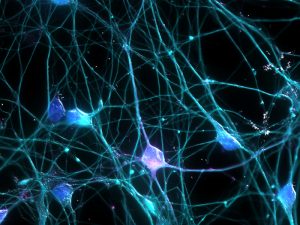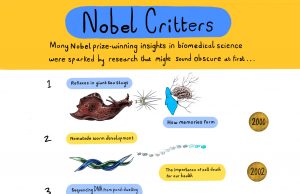Enter your address to receive notifications about new posts to your email.
Articles tagged Human Disease
(81 results)
-
How does trisomy 21 cause heart defects in Down syndrome?
In 1983, the median lifespan for people born with Down syndrome in the US was only 25 years. Today, due to better treatments for some of the most dangerous complications, that number has more than doubled. Despite these strides, many people with Down syndrome still die prematurely from congenital heart defects. In a recent study, Rambo-Martin…
-
Inside the genome of a deadly desert disease
Rhinocladiella mackenziei is a fungus that infects the human brain. It is the most common cause of neurological fungal infections in arid regions of the Middle East, and it is fatal in 70% of cases. However, little is understood about this lethal pathogen—not even its natural habitat. To learn more about the biology of R.…
-
‘Worm’ing through chromosome 21 for overlooked Down syndrome genes
There’s no doubt that an extra copy of chromosome 21 is what causes Down syndrome. There’s a lot of doubt, however, over which particular gene—or combination of genes—on chromosome 21 is the actual cause of its symptoms. To flesh out our understanding, geneticists must grapple with this large chunk of the genome that includes more…
-
From fish tank to bedside
Yeast and zebrafish are among the lab organisms being recruited to the search for rare disease cures. Rare diseases are not so rare. About 300 million people worldwide live with the more than 7000 individual diseases that are designated “rare” by the US government. But because each of these affect so few individuals, the usual…
-
How baker’s yeast turns from friend to foe
Beer, doughnuts, and genetics textbooks have one thing in common: they were all made possible by collaborations between humans and yeast. Our fungal ally Saccharomyces cerevisiae resides not only in breweries, bakeries, and laboratories, but also sometimes in our own bodies—where, on rare occasions, it betrays us. S. cerevisiae is increasingly being reported as an…
-
Genetics Society of America honors Philip Hieter with 2018 George W. Beadle Award
The Genetics Society of America (GSA) is pleased to announce that Philip Hieter is the recipient of the 2018 George W. Beadle Award, bestowed in honor of his outstanding contributions to the genetics research community. Hieter is Professor of Medical Genetics in the Michael Smith Laboratories at the University of British Columbia. Geneticists across the…
-
Beyond BRCA: new players in breast cancer pathways discovered
Mutations that disrupt the gene BRCA2 dramatically increase the odds of developing breast and ovarian cancer—but such mutations aren’t enough to cause cancer on their own. To turn normal cells cancerous, some of BRCA2’s genetic interactors must also mutate. In an article recently published in GENETICS, Ding et al. sought to identify some of these genes.…
-
Zebrafish offer hope for understanding severe form of epilepsy
The prolonged and severe seizures suffered by those with pyridoxine-dependent epilepsy (PDE) can lead to brain dysfunction and death if not treated. Standard antiepileptic drugs are typically ineffective for people with this rare genetic disorder—instead, they need high doses of vitamin B6 in the form of pyridoxine or pyridoxal 5′-phosphate. But even with this supplementation,…
-
Pesticide 2.0: Spray-on gene silencers
Guest post contributed by members of the GSA Early Career Scientist Communications and Outreach Subcommittee. In their bitter war with crop pests, farmers have two big guns: chemical pesticides and genetic engineering. But excitement has been building in the farming community for a new weapon that is unlike anything they’ve tried before, a pesticide 2.0.…
-
Benign yeast turn into filamentous pathogens in different ways
The yeast Candida albicans lives on and even inside many of us. Most of the time, its silent presence goes unnoticed, but this fungus can turn on its host, causing infections ranging in severity from annoying to life-threatening. For the yeast to become pathogenic, some of the C. albicans must transform from small, round cells…
-
Why do so many Nobel Prizes go to scientists working on fruit flies?
As night fell, astronomer Jean Jacques d’Ortous de Mairan watched a plant’s leaves, symmetrically arranged side-by-side on a stem, clamp shut. It was 1729, and he was studying the dramatic nocturnal movement of Mimosa pudica. Strangely, he found that the plant behaved the same way even when it wasn’t exposed to natural cycles of light…


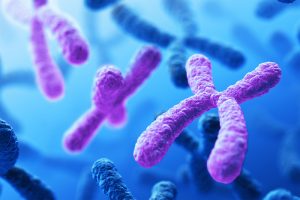

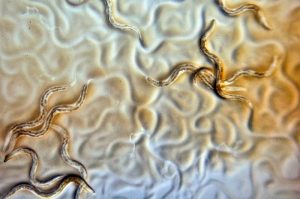
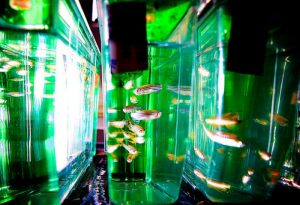


![Image by unknown photographer [Public domain], via Wikimedia Commons.](https://s43361.pcdn.co/wp-content/uploads/2018/01/Webp.net-resizeimage-17-300x221.jpg)
